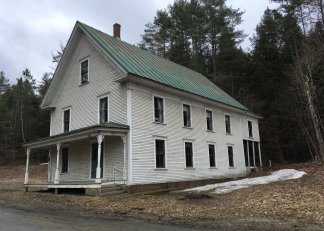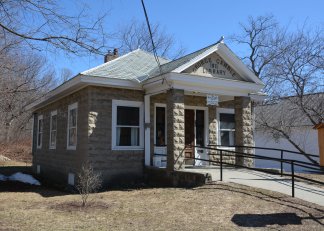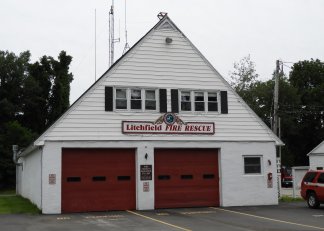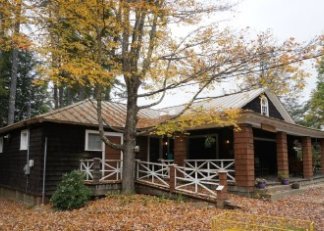State Register of Historic Places
The New Hampshire State Register of Historic Places (State Register) is an honorary listing that encourages the protection of significant buildings, districts, sites, landscapes, structures or objects that are meaningful in the history, architecture, archeology, engineering, or traditions of New Hampshire residents and communities.
Since 2000, nearly 500 properties owned by private citizens, organizations, municipalities, and the State of New Hampshire have been listed in the State Register of Historic Places.
Owners of a property listed in the State Register are free to maintain, manage or dispose of their property as they choose, without oversight or comment from the New Hampshire Division of Historical Resources (DHR). However, as property owners plan for needed maintenance or changes, staff members at the DHR are always available for questions and assistance.
Listing a Property
Property owners can nominate properties to the State Register by submitting a completed Individual Inventory Form. Prior to completing an Inventory Form, please contact the National Register & State Survey Coordinator at megan.r.rupnik@dncr.nh.gov with at minimum the property's address. Digital photographs and other information about the property would also be welcomed.
The DHR provides a list of consulting architectural historians who are familiar with the inventory and State Register processes in New Hampshire if assistance is needed. Once submitted, a completed inventory form will then be reviewed by DHR's Determination of Eligibility Committee, an inhouse committee that meets twice monthly. The committee will review the form for completeness and evaluate whether the property meets the State Register criteria for listing.
If the property meets the State Register criteria as determined by the DHR's Determination of Eligibility Committee, the inventory form is complete, and the property owner has consented to the listing, the DHR recommends the property for listing to the State Historical Resources Council. The Council, composed of professionals in the fields of American history, architectural history, architecture, prehistoric and historic archeology, and other related disciplines, meets quarterly and gives final approval to all nominations.
Criteria for Listing
All properties listed on the State Register are documented and evaluated against the following criteria. These broad criteria are designed to guide individuals, local governments, and others in evaluating potential entries in the State Register. Properties not specifically described in the text below may still be eligible. Generally, properties eligible for listing in the State Register should be at least fifty years old. The passage of time allows for a more objective evaluation of a property's historical significance. Properties approaching the fifty-year mark can be listed if their historical values are already clear.
Properties may be listed on the State Register for the story they tell. This story can be about a single event, such as a major labor strike at a factory, or about a much longer historical trend, such as the rise of textile manufacturing in the Merrimack River valley, or a number of stories that are together meaningful to a community's history, such as a mill complex that has housed a number of different industries on which a village has depended. Although the State Register recognizes that many of these types of historical resources have changed over the years to accommodate evolving technologies, styles and needs, the listed resource must retain enough of its historic fabric to illustrate its historic uses and role in the community.
Properties may also be meaningful for their associations with people who made important contributions to a community, profession, or local tradition. These types of resources could be the workshop of a popular painter, the home of successful local manufacturer, or the store of the first merchant in town. Again, these resources should retain the bulk of their historical physical fabric. One test is to question whether the person whose life the property illustrates would recognize it today.
Properties may also be listed on the State Register as well-preserved examples of local architecture, engineering, design, construction or engineering, or as long-standing focal point in a neighborhood or community. Examples could include: a well-preserved although typical example of a New Hampshire farmhouse, a town common, or the intact stone foundations of a local grist mill. These types of resources need not be extraordinary or the best example in town; they often can be common, although irreplaceable, features of the New Hampshire landscape.
Identified but unexcavated archeological sites may also be listed, as they can yield significant information about the lives, traditions and activities of New Hampshire's earliest residents. Please contact the DHR to discuss the nomination of an archaeological site, as different considerations may apply.
Benefits of Listing
- Consideration in the planning of local and state-funded or otherwise state-assisted projects: Listing in the State Register can help property owners and communities be more effective advocates for their historic properties by recognizing these resources as vital parts of a community and its landscape. Both state and federal historic preservation regulations seek to protect identified historic resources during activities such as governmental land sales and transportation projects.
- Qualification for state financial assistance for preservation projects, when funds are available: Historic preservation grants and funding from sources such as the Land and Community Heritage Investment Program (LCHIP) and Conservation License Plate funds (Moose Plate) use eligibility for or listing in the State Register, among other criteria, as a qualifying requirement.
- Special consideration or relief in the application of access, building and safety codes: Historic properties, including those listed on the State Register, are offered special consideration in the application of the Americans with Disabilities Act, building, energy, and fire codes, the state lead poisoning prevention law and administrative rules, and the state floodplain ordinance. Historic properties are not exempt from these code regulatory processes.
- A complimentary one-year membership to the New Hampshire Preservation Alliance: Founded in 1985, the New Hampshire Preservation Alliance works to preserve the state's historic buildings, landscapes and communities through leadership, advocacy and education. The Preservation Alliance generously offers State Register property owners a complimentary one-year membership.
- A State Register plaque is also available for purchase by property owners. Learn how to order a State Register plaque.
Changes to Properties Listed in the State Register
Any change to a historic property that harms or destroys its significant historic fabric may be grounds for removing that property from the State Register. These types of changes can include moving a building, replacing a building's most significant historic building materials with unsympathetic materials, or the destruction of its most important historical attributes, such as the subdivision of a farm's agricultural fields and the subsequent construction of modern housing. The degree of harm a change can cause depends on the reason why the property was listed on the Register, and each case must be reviewed individually.
On the other hand, changes to a property once judged to be ineligible for the State Register could render it eligible, such as the removal of modern building materials from a commercial storefront and the restoration of its original façade.
Removing properties from the State Register
Any person or organization may petition in writing to the DHR for the removal of property from the State Register. Given a clear, informative demonstration of why the property should be removed from the State Register, based on the four criteria given below, DHR will either forward its concurrence or disagreement with the request to the State Historical Resources Council. As with listing a property to the State Register, the State Historical Resources Council gives final approval or disapproval to all removal requests. Reasons for removing a property include:
- changes that have harmed a resource's historic integrity,
- the introduction of additional information that shows a property does not meet criteria,
- procedural error in the nomination or listing process, or
- a subsequent property owner's preference.







